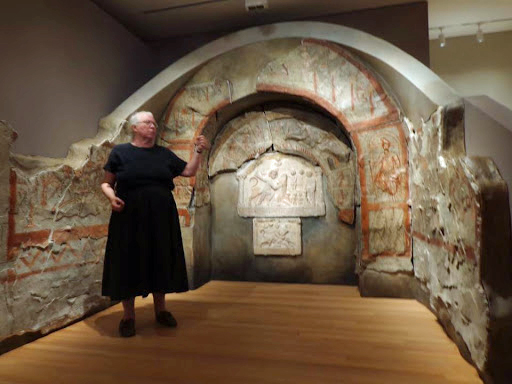Log in to access the full feed of our Acta Diurna.
Acta diurna is our Mithraic social stream for keeping up to date with what is happening in The New Mithraeum.
Owner of www.mithraeum.org and the Mithras and Mithraeum discussion lists on Groups.io. Co-founder of Nova Roma and the founder of Byzantium Novum.
Découvrez les coulisses de la réalisation et du montage de l’exposition « Le mystère Mithra. Plongée au cœur d’un culte romain ».
Philippe Roy, docteur en Sciences de l’Antiquité, présente dans cette vidéo la réception du culte de Mithra dans les provinces occidentales de l’Empire romain.
For the launch of our YouTube channel, we chat with the author, poet, essayist and friend Peter Mark Adams about the Sola-Busca Tarot, a Renaissance masterpiece, uncovering ties to the Mithras cult.
شب چله یا شب یلدا طولانی شب سال رازی را در خود پنهان داشته . در فرهنگ و تاریخ ایران باستان ، این شب تولد ایزد مهر و خورشید است چرا که از صبح روز اول دی روزها طولانی تر شده و روشنایی بر تاریکی پیروز میشود.
The 24th annual MithraCon has been announced! It will be held in New Haven Connecticut from Friday 26th to Sunday 28th April 2024.
MithraCon, or the New England Convention of Mithraic Studies, is a small informal conference focused on the study and exchange of information about the ancient mysteries of Mithras (and some other classical world topics), held each year on the campus of Yale University.
More information coming soon.
Find out more at their official website: http://www.mithracon.org.

Hi, I’m a newly converted Greco-Roman pagan who’s deeply interested in Mithraism. Have no idea if I’m in the right place though!
Community dedicated to the study, disclosure and reenactment of the Mysteries of Mithras since 2004.
A chara,
Any chance of an English translation of El Culto de Mitra en Hispania? If all else fails I’ll work my way slowly through it with my diccionario. Meanwhile, I’m struck by some similarities between the Mithraic Mysteries and Irish Druidism, particularly the tairbhfeis roughly translated as the "bull feast" or "bull sleep". The slaughter of a bull was involved. Rites of kingship applied but also when in search of visions, the Druid/Druidess would wrap themselves in a bull hide and sleep within the dark caves of the ancient mounds (built pre Druidic religion). Many of the mounds were constructed to face the sun. The mound at Brugh na Boinne has a ’roof box’ over the entrance which allows for the sun’s rays of the winter solstice to strike the central chamber. O.R.
writer, screenwriter, creative in XR (Extended Reality) immersive technology & media.